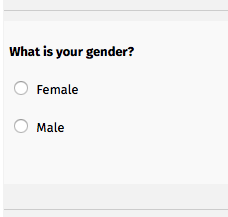
When we go to a new doctor’s office or meet someone new, most people identify my younger son as female. He has let his straight, black hair grow longer, reaching a bit past his shoulders now. He is also small for his age, quiet (in public), and generally shy, and his name (being Chinese) does not suggest a gender for most people in the United States. These markers, it seems, lead people to mislabel him.
While he seems unfazed by this, others are not. When people discover their error, they suddenly become extremely apologetic and embarrassed. But why? It is an understandable mistake, and neither he nor my wife or I take offense at the mistake. Of course, they do not know that it is not a big deal to him, so the common assumption/fear may be that someone will be hurt or angry over the error, but that does not seem to be the whole situation.
We all assume that we can identify a person’s gender. The 1990’s Saturday Night Live skit “It’s Pat” (see one example here) featured a gender ambiguous, nerdy character and highlighted how uncomfortable others are if they cannot identify someone’s gender. Ambiguity about such an “obvious” binary is unsettling for many. While we assume that the difference of gender is naturally significant and readily identifiable, the assumption that everyone easily falls into one of two genders is inaccurate, as the recent posts on social media about the different chromosomal combinations of X and Y highlights. We have similar issues about ethnicity and race, assuming that we should be able to visually identify someone’s heritage, which creates problems for multi-ethnic people and makes the discovery that someone is “passing” as a member of a race/ethnic group when their ancestry does not conform to the social construction of that group into a newsworthy event. Continue reading “Embarrassment and Naturalizing a Gender Binary”
